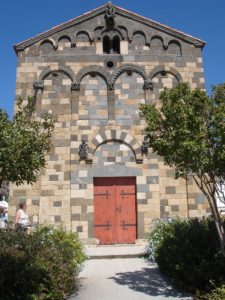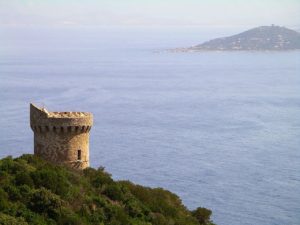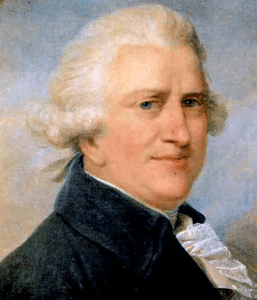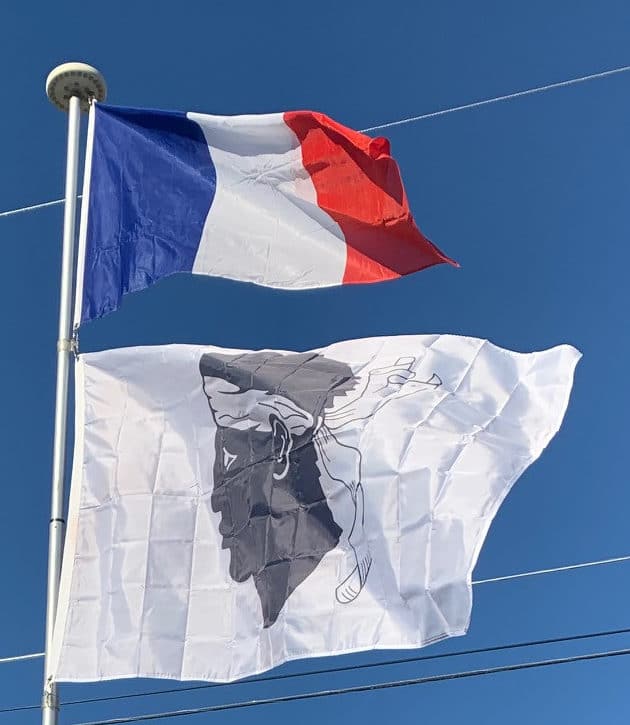
Due to that, then began also the traditional division of Corsica in two parts, along the main chain of mountains roughly going from Calvi to Porto-Vecchio: the eastern Banda di dentro, or Cismonte, more populated, evolved and open to the commerce with Italy, and the western Banda di fuori, or Pomonte, almost deserted, wild and remote.
The crushing defeat experienced by Pisa in 1284 in the Battle of Meloria against Genoa had among its consequences the end of the Pisan rule and the beginning of the Genoese influence in Corsica: this was contested initially by the King of Aragon, who in 1296 had received from the Pope the investiture over Sardinia and Corsica. A popular revolution against this and the feudal lords, led by Sambucuccio d’Alando, got the aid of Genoa. After that, the Cismonte was ruled as a league of comuni and churches, after the Italian experience. The following 150 years were a period of conflict, when the Genoese rule was contested by Aragon, the local lords, the comuni and the Pope: finally, in 1450 Genoa ceded the administration of the island to its main bank, the Bank of Saint George, which brought peace.
In the 16th century, the island entered into the fight between Spain and France for the supremacy in Italy. In 1553, a Franco-Ottoman fleet occupied Corsica, but the reaction of Spain and Genoa, led by Andrea Doria, reestablished the Genoese supremacy on the island, confirmed by the Peace of Cateau-Cambresis. The unlucky protagonist of this episode was Sampiero di Bastelica, who would later come to be considered a hero of the island. Their power reinstated, the Genoese did not allow the Corsican nobility to share in the government of the island, and oppressed the inhabitants with a heavy tax burden: on the other hand, they introduced the chestnut tree on a large scale, improving the diet of the population, and built a chain of towers along the coast to defend Corsica from the attacks of the Barbary pirates from North Africa.

The period of peace lasted until 1729, when the refusal to pay taxes by a peasant sparked the general insurrection of the island against Genoa.
Rise and Annexation of the Corsican Republic:
In 1729 the Corsican Revolution for independence from Genoa began, first led by Luiggi Giafferi and Giacinto Paoli, and later by Paoli’s son, Pasquale Paoli. After 26 years of struggle against the Republic of Genoa (plus an ephemeral attempt to proclaim in 1736 an independent Kingdom of Corsica under the German adventurer Theodor von Neuhoff), the independent Corsican Republic was proclaimed in 1755 under the leadership of Pasquale Paoli and remained sovereign until 1769, when the island was conquered by France. The first Corsican Constitution was written in Italian (the language of culture in Corsica until the middle of the 19th century) by Paoli.

The Corsican Republic was unable to eject the Genoese from the major coastal fortresses (Calvi and Bonifacio). After the Corsican conquest of Capraia, a small island of the Tuscan Archipelago, in 1767, the Republic of Genoa, exhausted by forty years of fighting, decided to sell the island to France which, after its defeat in the Seven Years’ War, was trying to reinforce its position in the Mediterranean. In 1768, with the Treaty of Versailles, the Genoese republic ceded all its rights on the island. After an initial successful resistance culminating with the victory at Borgo, the Corsican republic was crushed by a large French army led by the Count of Vaux at the Battle of Ponte Novu.
